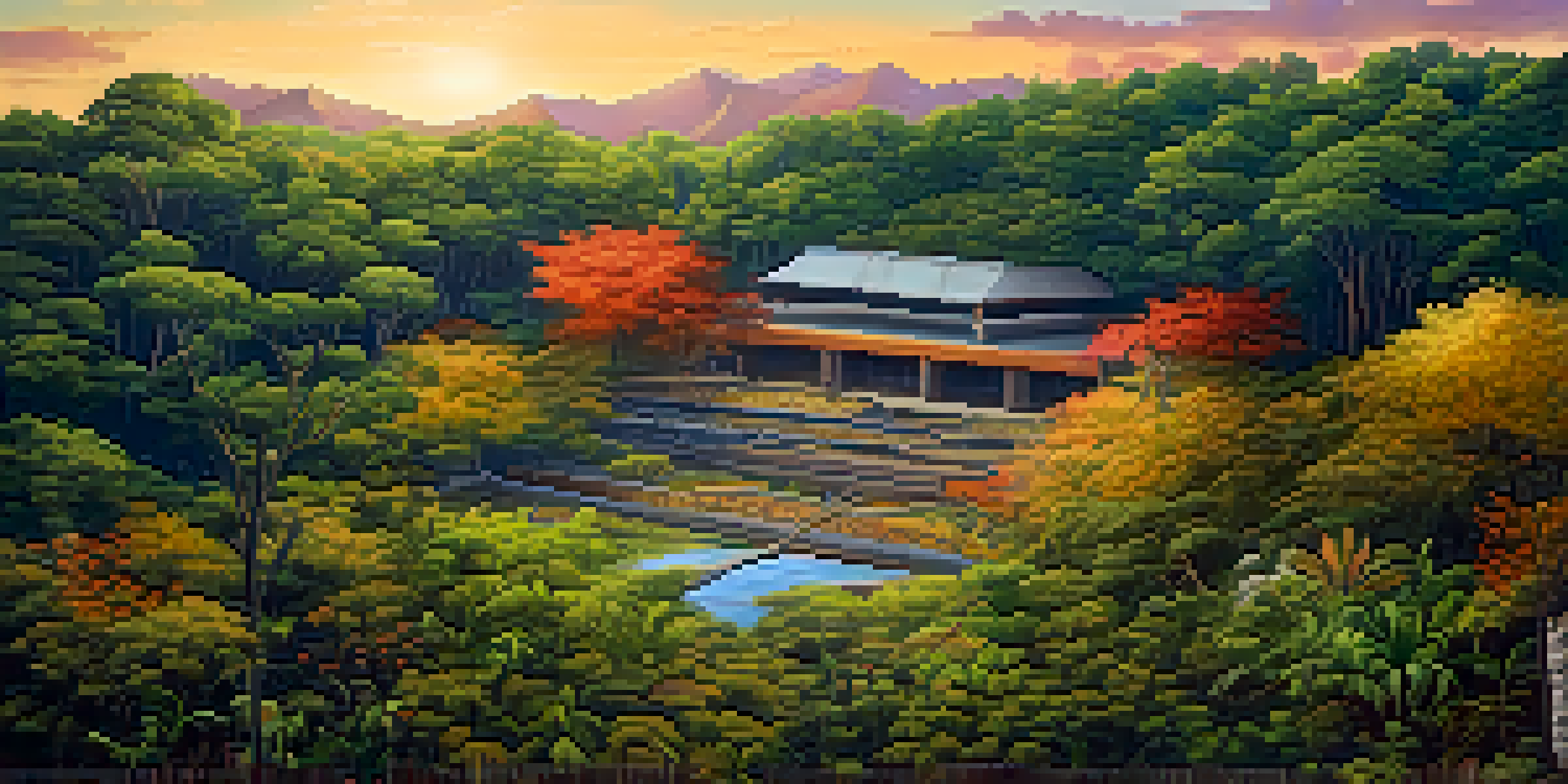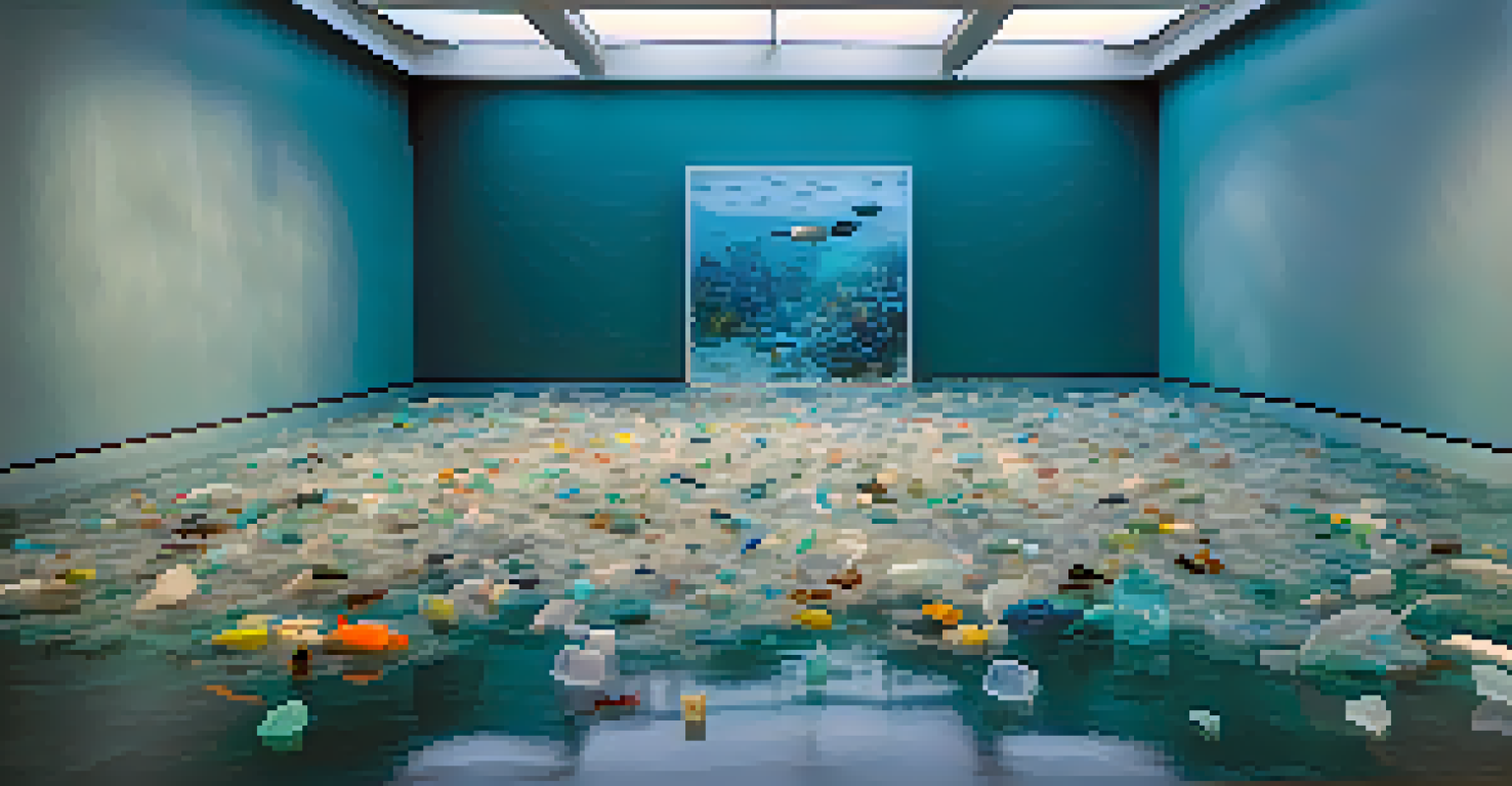How Artists Use Visual Storytelling to Highlight Climate Crisis

Understanding Visual Storytelling in Art
Visual storytelling is a powerful technique where artists convey ideas and emotions through imagery. It goes beyond simple representation, aiming to engage viewers on a deeper level. By using colors, shapes, and symbols, artists can create narratives that resonate with the audience and provoke thought.
Art is not a mirror held up to reality but a hammer with which to shape it.
This method allows artists to communicate complex themes, such as the climate crisis, in a way that is accessible and relatable. For instance, a single painting can encapsulate the devastating impact of rising sea levels or deforestation, prompting viewers to reflect on their own relationship with the environment. The visual aspect makes these issues feel immediate and personal.
Ultimately, visual storytelling serves as a bridge between art and activism, inviting spectators to not only appreciate the aesthetics but also to engage with the pressing realities of our world.
Art as a Reflection of the Climate Crisis
Artists often draw inspiration from the environment, and their work can reflect the beauty and fragility of nature. This duality is especially poignant in the context of climate change, where the destruction of landscapes becomes a central theme. Through their art, creators can highlight the stark contrasts between thriving ecosystems and those ravaged by human activity.

For example, artists may depict lush forests alongside images of deforestation, creating a visual narrative that illustrates loss. This juxtaposition can evoke strong emotional responses, encouraging viewers to consider the consequences of their actions. By showcasing both sides, artists effectively tell a story about the urgent need for environmental stewardship.
Art Engages with Climate Issues
Visual storytelling in art effectively communicates complex themes related to the climate crisis, making these issues relatable and personal.
In this way, art becomes not just a medium for expression but a commentary on society's choices and their repercussions on the planet.
Case Studies: Impactful Artists and Their Works
Several contemporary artists have made significant contributions to climate awareness through their visual storytelling. Take Olafur Eliasson, for example, whose installations often emphasize the beauty of nature while confronting viewers with the realities of climate change. His immersive works compel audiences to engage with environmental issues on a personal level.
The greatest threat to our planet is the belief that someone else will save it.
Another notable figure is Ai Weiwei, who uses his art to comment on the human rights implications of environmental degradation. His installations often incorporate recycled materials, emphasizing sustainability while critiquing governmental inaction. By merging art with activism, these artists create powerful narratives that resonate with a global audience.
These case studies highlight how individual artists can amplify the conversation around climate crisis, using their unique perspectives to inspire change and awareness.
The Role of Community in Artistic Expression
Art is not created in a vacuum; community plays a crucial role in shaping an artist's vision. Many artists collaborate with local communities to address climate issues that directly affect them. This grassroots approach ensures that the narratives told through art are authentic and rooted in real experiences.
For instance, community murals can transform public spaces while educating passersby about environmental challenges. These collaborative works often reflect the collective voice of a community, highlighting the importance of unity in addressing climate change. By engaging local populations, artists can foster a sense of ownership and responsibility towards the environment.
Community Drives Artistic Expression
Collaborative projects with local communities allow artists to create authentic narratives that address environmental challenges directly affecting them.
Through these community-driven projects, art becomes a tool for empowerment, inspiring collective action and awareness on a larger scale.
Digital Platforms: Expanding the Reach of Art
In the digital age, artists have unprecedented access to global audiences. Social media platforms allow them to share their work and messages about the climate crisis far and wide. This expanded reach means that impactful visual storytelling can easily spark conversations and inspire action across diverse demographics.
For example, artists can use Instagram to showcase their environmental art projects, attracting followers who share similar concerns. This online engagement creates a community of like-minded individuals who are motivated to advocate for change. Additionally, digital art can be easily shared, making it a powerful tool for spreading awareness.
By leveraging technology, artists can amplify their narratives, reaching people who might not otherwise encounter these critical issues.
Art as a Catalyst for Change and Action
Art has the unique ability to inspire action, and many artists utilize this power to motivate audiences towards environmental advocacy. Through exhibitions, workshops, and community events, artists can galvanize support for climate initiatives. Their work often serves as a rallying cry, encouraging individuals to take tangible steps in their own lives.
For instance, an art installation focusing on ocean pollution can lead to organized beach clean-ups, transforming awareness into action. By creating a visceral connection to the issues at hand, artists can foster a sense of urgency that drives change. This transformation from passive viewing to active participation is a critical aspect of artistic engagement.
Digital Platforms Amplify Art's Reach
Social media and digital tools enable artists to share their climate-focused work widely, inspiring conversations and actions across diverse audiences.
Ultimately, art becomes a catalyst, not just for awareness but for meaningful action in the face of the climate crisis.
The Future of Visual Storytelling in Climate Advocacy
As awareness of the climate crisis continues to grow, the role of visual storytelling in art is likely to expand. Emerging artists are increasingly incorporating sustainability into their practices, using eco-friendly materials and methods. This shift signifies a commitment to not only addressing climate issues through art but also embodying those values in the creation process.
Furthermore, as technology evolves, new mediums, such as virtual reality and augmented reality, offer exciting possibilities for immersive storytelling. These innovative approaches can create even deeper connections with audiences, making the realities of climate change more palpable and urgent. Artists will be at the forefront of exploring these new frontiers.

In the coming years, the fusion of creativity and activism in visual storytelling will undoubtedly play an essential role in shaping public discourse around climate change, inspiring hope and action.